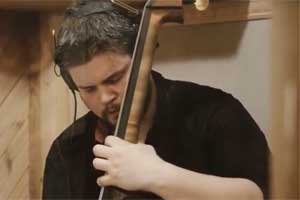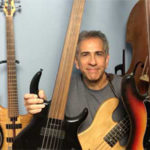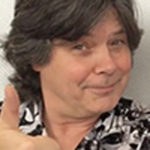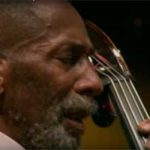In-demand doubler tells of breaking into the NYC scene, being mentored by Ron Carter and his brand new solo release
Exclusive interview with FBPO’s Jon Liebman
April 6, 2016
A native of Houston, Texas, Marcos Varela is a master of both electric and upright bass, as well as an accomplished composer and arranger.
After attending the High School for the Performing & Visual Arts in Texas, Marcos attended New School University/Mannes School of Music in New York City on a music scholarship. Having quickly become ensconced in the New York music scene, Varela has already performed and/or collaborated with a long list of music luminaries, including Billy Hart, Charli Persip, Jason Moran, Rudy Royston, the Mingus Big Band, George Cables, Winard Harper, Junior Mance, Antoine Roney, Robert Glasper, Kendrick Scott, Lew Tabackin, The Last Poets, Leslie Odom Jr. of “Hamilton”, Geri Allen and many others. He has also been a member of the Kennedy Center “Betty Carter Jazz Ahead” program in Washington, DC and Ravinia-Steans institute in Chicago…. Marcos’ debut solo recording, San Ygnacio, was released in March on Origin Records.
FBPO: You’re from Texas, from the Houston area, right?
MV: Yes, sir!
FBPO: How would you describe those early days as far as your initial exposure to music, your musical upbringing?
MV: Both my parents came up in the ‘60s, listening to Sam Cooke and a lot of Motown, all the way up to early ‘70s stuff, Led Zeppelin, the Beatles, Rolling Stones, those types of groups. My mom really liked music and always had a good ear, which I feel I inherited that from her. She played piano, but never really pursued anything musically. My dad’s an architect, My grandfather was a cartoonist and sign painter. So we had a lot of artists in my family, uncles and aunts, but my cousin Joe and I were the first musicians. Even with all this art around me I didn’t really become a musician until later in life, so my musical upbringing was just exposure to the records that my parents had. I started learning music and playing (electric bass) when I was about 16 and then moved to learning upright as well when I was about 17. I was mostly a sports kid up until then, as my uncle Al coached baseball and my grandmother loved it, so that was what I did for my after-school activities.
FBPO: How did you become a bass player?
MV: I had a friend, Alan Hampton, a great bassist and songwriter who was going to the High School for the Performing and Visual Arts in Houston (HSPVA), which is a pretty well known school among musicians. A lot of great musicians have come out of it: Mark Kelley from The Roots went there…I remember seeing his plaque in the jazz room in high school for all state band and aspired to do the same, which I later did! Robert Glasper…Jason Moran — a prolific pianist and Blue Note recording artist who now is the Artistic Director for Jazz at the Kennedy Center. A lot of great jazz musicians came out of that school like Eric Harland, Chris Dave, Kendrick Scott, Walter Smith.
In the pop music world, people like Beyoncé went there, and producer Bryan-Michael Cox, so we had a lot of influential people coming through, including people that went on to great things in other artistic fields, like Harris Wittels who became a successful writer for the NBC show Parks and Recreation, and my good friend Matt Mullenweg who is the founder of WordPress — so to say the least it is and continues to be an inspirational place, and was important to my development as a young musician/artist.
Before HSPVA, I was going to another high school and as I was heading into my junior year of high school my friend Alan said, “I’m leaving for college and HSPVA needs a bass player.” I had just started learning electric bass and music, but thought I’d give it a shot. That summer I practiced hard and learned music for the audition. I’d really only been playing about six months at that point, but I was a quick learner and had a good ear, so my early learning was listening and picking up the music from the records that my parents had. Reading was something I had to practice and work hard on later.
FBPO: Out of all the instruments in the world, what made you gravitate to the bass?
MV: At first, I only knew of the bass in passing. I liked Paul McCartney’s bass playing, I liked James Jamerson a lot, Flea from the Red Hot Chili Peppers. John Paul Jones was a big influence too. I was always gravitating toward the instrument when I would listen to songs. At first I didn’t necessarily know that it was the bass. I just thought of it as a low-sounding guitar that sounded really cool and made me want to dance. The older I got the more I gravitated toward it. It felt natural and it felt where I needed to be, which led me to picking it up as my instrument of choice.
FBPO: If you’re going to talk about Detroit bass players, don’t forget Ron Carter!
MV: Of course! I was just getting to him next as that’s a big one, Ron’s became a serious mentor and a teacher to me. He’s part of that rich Detroit bass player and musician lineage. He came to New York just a little bit after Doug Watkins and Paul Chambers were in New York and took the innovations they started and took it further in my opinion. With Miles Davis’ second great quintet, that band changed the way music was played and in turn he changed the way bass was played, carried that torch and revolutionized modern bass playing, as far as I’m concerned. My studying with Ron has given me a lot, not just in terms of the instrument, but also a lot of important life lessons. He has been a big influence on me.
FBPO: How did you hook up with Ron?
MV: I met Ron through the great drummer, Charli Persip. Charli is a storied drummer with credits playing in Dizzy Gillespie’s band, Billy Eckstine, Red Garland and countless others. One of Ron Carter’s first records was with Charli when he moved to New York. I was working in Charli’s big band at the time and Charli being a wonderful guy and complimentary of my playing suggested I study with Ron as they were close friends, and that’s the way Ron and I connected.
My time with Charli Persip was influential. Hearing his stories and getting to spend some time with him was great and seeing all the records he was on with so many great bassists, not just Ron, but Sam Jones, Wilbur Ware, Milt Hinton, Oscar Pettiford, Eddie Gomez, all those legendary guys was a list of a who’s who of bass players. So that was really cool to learn about in general and we stayed good friends since.
FBPO: What was Ron like as a teacher? From what I’ve heard and read, I get the feeling that if you came to the lesson unprepared or if you hadn’t practiced or if you did something he didn’t like, he could really make you feel – not so good!
MV: [Laughs] Well, he deserves respect for the person he is and what he has accomplished so he wants you to take a lesson very seriously. If he’s teaching (you), you’re already at a certain level. He doesn’t teach just anybody that comes to him; you have to be at a place where he can work with you, mold you and clean up any bad habits you may have developed before. He’s really the best teacher I ever had. He gave me the nuts and bolts of how to play the instrument — not just upright bass, but the bass in general. If anybody has a chance to study with him or any of these older masters I highly suggest it. For me he really helped me develop and get past some roadblocks I was encountering because of his deep knowledge of how to play the bass in so many situations, not just a jazz situation. He’s also able to give you the fundamentals of other things in music, non-negotiables like, showing up on time, asking the right questions about the music at hand, how to be adaptable to different situations, personally and musically. He’s definitely the most recorded bassist around for a reason! [Laughs]
FBPO: How long had you been playing when you studied with him?
MV: I guess it was around ’09 or ’10, when we got together.
FBPO: So you were already in New York at the time.
MV: Yeah, I moved to New York to attend New School, Mannes College of Music. Right out of high school, I got a great scholarship to come up to New York, where all these great musicians were. Most of the musicians from my arts high school either came to New York or went to LA, so New York was just an easy transition. My high school had a great relationship with that program.
FBPO: As an upright player, New York was probably a better place for you anyway.
MV: Yeah, but I play a lot of electric too. I consider myself a doubler at this point. I think of the sonority and musical situation for which bass I use rather than a thought about which one I’m more comfortable on playing-wise.
FBPO: Tell me about your new record, San Ygnacio.
MV: This record in particular is a statement of my jazz background and what I’ve been doing in the jazz world up to this point. I do consider the newer projects that I’m part of a lot more fusion with a lot of different elements, more rock/funk/R&B/hip-hop/songwriting elements mostly. There’s a little bit of that on the last track of the record, “Where the Wild Things Are” that has more of a rock feel to it. The second track, “Colinas de Santa Maria,” has more of a World Music/West African feel to it. So you can start to hear where I’d like to go and where I’ll end up going eventually from my influences, but this record is definitely a jazz statement and a culmination of that experience.
FBPO: Tell me about the personnel. You’ve got some younger guys, as well as some elder statesmen of jazz.
MV: Most of the players are guys who are my peers from the scene and who are well known and doing wonderful things in the scene and getting their names out there. Logan (Richardson) just released a record on Blue Note in February. Dayna (Stephens) is a wonderful player on the scene as well. Eden Ladin is a great pianist from Israel. Arnold (Lee) is a great saxophonist and is the son of the great bassist and composer Bill Lee, whose bass quartet I had the pleasure of being a part of. Kush (Abadey) is a masterful young drummer recently working with Ravi Coltrane and Chris Potter. So we’re all kind of in a similar group of cats that is playing in the jazz scene today, and 2 tracks from the record come from a collaborative band Arnold, Eden, Kush and I once had together.
George Cables is one of the great living masters on the piano and Clifton Anderson is a wonderful trombonist whose credits include years with Sonny Rollins and recordings with McCoy Tyner and Stevie Wonder. Billy Hart was one of the guys that took notice of my playing when I got out of college around ’07 / ’08. He gave me one of my first higher profile gigs in the jazz scene. He’s a well-storied player playing in Herbie Hancock’s Mwandishi band, (with) Stan Getz, and he’s worked with pretty much everybody in the jazz genre and even with guys like Jimi Hendrix when he worked with the Isley Brothers.
FBPO: Jabali Billy Hart, right?!
MV: Yeah, Jabali Billy Hart! He was one of the first guys I really learned from. Still, to this day, we’ve stayed close friends, and we stay in touch as he talks to me about a newer project he wants to involve me in that he is putting together. He’s one of the people that really inspired me and that’s why it was important to have him be part of the record, as well as George Cables. George Cables is similar to Billy in his playing history. They’re about the same age and like Billy, George has worked with everybody, people like Dexter Gordon, Joe Henderson, Art Pepper, Tony Williams, Philly Joe Jones. He’s not boxed into any one style. He’s open minded to try anything and, at the same time, he’s so enriched in the tradition of the music that you can hear the generations and all that history in his playing. It’s really cool to hear what he’s taken with the history and then moved forward with it as well, and taken it to a new place that is uniquely his own…a true master musician.
FBPO: How did you get guys of that caliber, George Cables, Billy Hart and the others that you mentioned? You’re a great player and you’ve done a lot, but you’re a different generation and they’ve been established for decades and decades. How’d you pull that off? Good for you!
MV: Well, you know, you get and develop a name from the scene. You work hard and you build up a reputation and working credits. I already had that going on with Billy’s young group as well as others musicians I mentioned. Billy heard me play and had asked me to join his band; from there came other opportunities. I met George doing a program called the “Betty Carter Jazz Ahead Program” that’s done by the Kennedy Center. It was Dr. Billy Taylor, at the time, but now it’s Jason Moran running the program – but it was special learning experience working with Dr. Billy Taylor who ran it when he was still alive. I was working with Winard Harper’s band, a wonderful jazz drummer who played with Billy Taylor. Winard said they need a bassist, and if I was interested I could come do it.
That’s where I first met George, and we just really connected on a lot of different things. He was interested in the fact that I was scoring films and getting into that side of music, writing, arranging, as well as just my playing in general. He enjoyed that and our connection, so we stayed in touch. When this record opportunity came up, I said, “I’ve got to do something with George!” We developed such a nice relationship and he would be just the perfect person to have on this, as well as Billy.
Billy and George had worked together a lot, so I knew there would already be a nice synergy there. I thought putting myself in the mix, with a new twist, with a type of music that people might not be used to hearing from them, would give it a new, fresh kind of flavor.
FBPO: Tell me about your equipment.
MV: I play an NS Design CR5. I love it! It’s especially great for travel nationally or internationally because of the compactness of it. It’s one of the most versatile instruments I have, by far. It has a lot of tonal options I can get out of it. It’s a great instrument and it does wonderful stuff.
I kind of fell upon it and I said, “This is something I can really use,” especially being a doubler. I’m already carrying a big instrument, a double bass, and if I’m doing a gig where I need to double and I might need a “P” bass sound for a couple songs or something that’s punchier, like a jazz bass sound, I can get both those tones – or close to those tones – with the bass, so I just love its versatility and compactness of size.
FBPO: Do you have a main bass that you take with you on a gig?
MV: It really just depends on what the gig calls for as I have many basses. If it’s going to be a singer/songwriter type gig or old school R&B/funk sound, a P bass with flatwounds is a really popular sound right now. The choice of instrument tends to be on what the sound the band leader is going for or wants, but like I said, the CR5 NS Design bass can get pretty close to that, so I end up taking that on a lot of gigs and traveling with it the most because it’s very versatile.
FBPO: Talk to me about being a doubler. What insights can you share about being on a gig where you’re playing both electric and upright bass?
MV: I guess the main thing goes to my Ron lessons. Ron gave me one way to play. When I came to him I felt I was even having trouble finding a consistent sound on the upright. I felt like I would do different things with my hand in search of the sound I wanted. I would see different players and everybody would play physically different, but Ron set it all straight for me. He said, “No, this is what you do. It doesn’t matter if you’re playing electric or upright. This is just how to play the bass.” When he put it in perspective like that and gave me those details, it cleaned it all up for me in my head. I wasn’t confusing myself any more.
I approach the electric with the same kind of evenness of sound and concentration that I would an upright. I feel like the upright gave me a lot of insight into really playing an instrument because it’s so physically difficult and you have to make it easy on yourself. I try to think of those concepts when I go to the electric bass. I noticed that through a lot of doublers, whether it’s a guy like Tom Kennedy or John Patitucci even. John in my opinion is one of these guys that has a unique, deep, artistic voice on both instruments, and I could be wrong, but from watching him play I feel he comes from a very “upright” perspective of playing electric, even though he plays very “electric” ideas. There are certain things that are easier to do on the electric than the upright — facility being one of them, being able to get through the instrument. What’s important is trying to connect the concepts musically, rather than, “Oh, man, I gotta play this huge, big instrument now, and then I’m playing this other little one!” I try to think of them as the same instrument and not really be concerned so much about playing each one so differently than the other. To be masterful at both is a rare thing. They’re definitely different instruments so I do think there is a learning curve for both.
FBPO: What about the future, Marcos? Now that the record is out, what other dragons are you looking forward to slaying?
MV: I have a project that I’m part of with some guys that has a little more rock influence, kind of a Wayne Krantz kind of thing, a rock/jazzy sound. I have a lot of other sideman projects with jazz musicians too. I’m going on the road with some European musicians this summer promoting my record as well as a west coast tour in June. I don’t really have one set thing I’m doing. Whatever I get called for, that’s where I’ll venture. The pleasure of being a bass player!
FBPO: What would you be if you weren’t a bass player?
MV: Probably something still in the arts. I love film and continue to frequently write scores for film and TV. One film score I’m particularly proud of is for a short film “Roots in Water” directed by Domenica Cameron-Scorsese. I sometimes fantasize that it would be fun to be a director or a screenwriter. I also love history, so I could possibly see myself being a history professor. But I’m pretty artistic, so I think I would stick somewhere in the arts.




